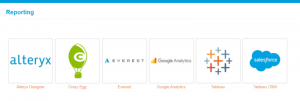Traditionally, integrated campaign forecasts begin with a campaign flow or funnel, built front-to-back. Impressions to clicks, clicks to site visits, etc. Last year I created a post Accessible Key Performance Indicators, A 4 Part Framework, to help planners better understand KPI’s but, significantly, not the micro-details of campaign performance metrics. Recently, however, we have been helping Marketers look at integrated campaigns differently in order to go beyond the obvious performance metrics. Rather than impressions, click-thru’s, social shares and bounce rates, marketers need to pay attention to the other side of the funnel with metrics such as close ratio, lead disqualification and irrelevant site visits. Here’s how:
1. Close ratio
Email nurturing and basic forms of content are slowly providing diminished returns as these tactics become ubiquitous to marketers and noise to target audiences. Companies like Hubspot are focusing on ways to combat audience fatigue and tactic saturation because of the drastic change in how we communicate. Their new product, Signals, represents an example of tying email open rates to individual profiles. Despite these efforts from technologists, considered-purchase cycles still challenge close ratios. Considered purchase buyers are always going to be on very different timetables (some immediate, but most longer-term). You need numerous communication channels in order to help sales nurture campaign relationships.
If you are not using social CRM practices to supplement email, phone, and content nurturing, you are missing an opportunity to improve this very important metric. Assign one team member to do a full inventory of your tools and personal. The assessment will enable them to pick the right places and right personnel to begin piloting social CRM within your marketing campaigns.
2. Lead disqualification
Disqualification happens in the funnel process as leads are filtered and further assigned for follow-up. Disqualification can be automated (like scoring), human-driven, or a combination of both. This one performance indicator has a massive impact on forecasting. Disqualified leads can be as high as 50%-65% in many campaigns. Too often marketers will either fail to estimate accordingly for disqualification, or they will make the mistake of not investing the time to really understand how a leads should be qualified.
As a marketer you need to know what “value” you are getting for your impressions and clicks. Disqualification insights help to inform this. Additionally, if sales team members are helping to filter, you need to forecast for their time following-up with leads. Good forecasting will help you avoid under-resourced campaigns, or the opposite, under-performing campaigns.
3. Irrelevant site visits
Before a lead can be scored and then filtered (qualified or disqualified) they will be accounted-for as an anonymous web site visit. You will always have some amount of irrelevant web visits as people conduct their own research, try selling you something, look for a job, etc. And as you publish more content and use inbound demand generation, irrelevant visits will continue to be a natural byproduct. Your targeting efforts help control some site visitor composition, but there will always be some percentage out of your control.
What you can control, however, is making sure that you carefully use your forecasting to define what constitutes a good site visit, versus an irrelevant visit. Irrelevant visitors will not register as site bounce. They will move past a bounce statistic, and seem like a potential lead. Work with your web analytics practitioner to understand what your applications can do using cookies, ID’s or profiling. That knowledge will help you understand how much you will need to create forecasts based on observational calculations versus unique user data.
You will want to arrive at an acceptable tolerance level for irrelevant site visits. For some campaigns this number can be as high as 25-35%. It doesn’t necessarily imply a good or bad thing, unless you can get to very granular details with your inbound targeting. The tolerance range should serve more as a guide to help you complete accurate forecasting and not overestimate your potential for qualified leads. Because identifying leads and cookie tracking has become so important to marketing applications, it is an important field to follow. A potentially big policy change regarding cookies from Google has been imminent for sometime. You can learn more about Google AdID and how it may affect your campaigns via Google Play.
As you go through this process you will find that there are some unforeseen benefits working in reverse through your campaign funnel planning. It can help you focus on some overlooked but tremendously important performance indicators such as close ratio, disqualification and irrelevant visits.
Business Articles | Business 2 Community
(332)




